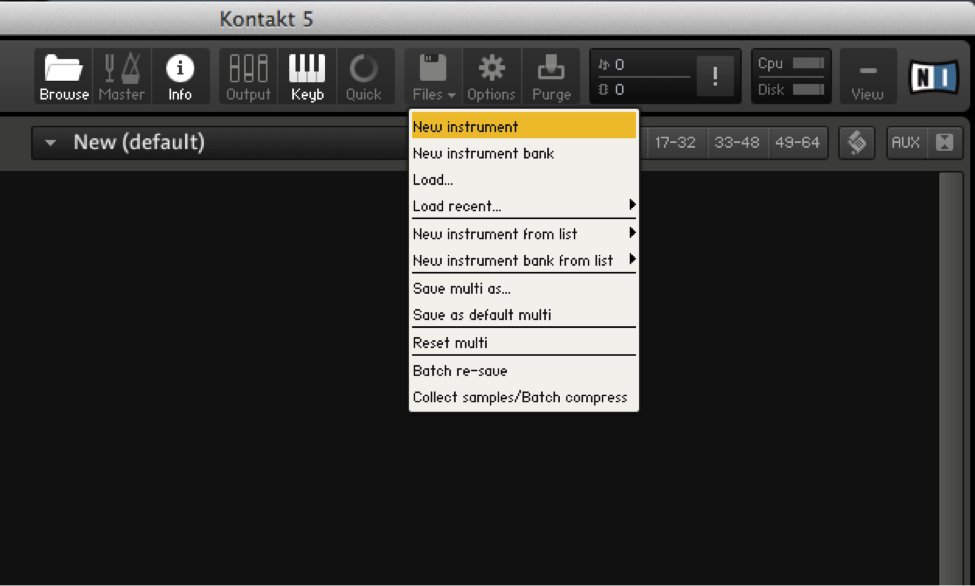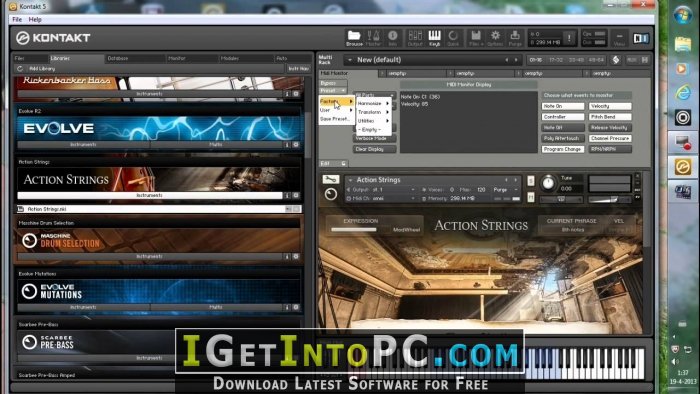Kontakt Library Creator For Mac
the guys at SoundKandy made a professional little tutorial for making libs check it out. thanks SoundKandy!
Kontakt Library Creator For Mac - mienas Top 10 Free Kontakt Libraries (2020) Sometimes we want to include realistic sounding instruments in our tracks. However, recording a real instrument or buying sample libraries can turn out quite pricey. Kontakted is a simple library and wallpaper creator for Mac. You can drag and drop your own images and add text to your selected wallpaper. The application allows you to apply your style to the libraries and use any style of font you own. The resize feature lets you shrink your images to fit.
check out our set of Vst3 Plugins (windows only) and AU mac
- The simple Lib and wallpaper Creator for Mac & Pc
- Add Text to your selected wallpaper
- Drag and Drop your Own Images
- 1 Click Library Creation
- Add Your Style to your libs
- Use any style of Font you own
- ReSize Shrinks your Images to fit
- Windows 7 / 8 / 8.1 /10 Compatable Mac compatible upto Mojave
- New Graphic Effects engine
- NEW Manual & Auto SNPID
Kontakt 6 does not have the ability to add user a Library some users have had success using 6 by loading there library into an older version and then swap to 6 to use them

This new mac version assembles the full library on your desktop it first it creates a folder with your new library name copies all your target files into the new folder then the software removes the old .nicnt files and replaces them with your new ones and drops both the nicnt and wallpaper into the folder for you making it first time user friendly.
Hope you like it and use it like i do every day…
Dazz..
Built for cubase now available
Get yours now!
Pay with PayPal and Download …
-->In this tutorial, you create a class library that contains a single string-handling method.
A class library defines types and methods that are called by an application. If the library targets .NET Standard 2.0, it can be called by any .NET implementation (including .NET Framework) that supports .NET Standard 2.0. If the library targets .NET 5, it can be called by any application that targets .NET 5. This tutorial shows how to target .NET 5.
Note
Your feedback is highly valued. There are two ways you can provide feedback to the development team on Visual Studio for Mac:
Kontakt Library Creator For Mac & Win V2.2
- In Visual Studio for Mac, select Help > Report a Problem from the menu or Report a Problem from the Welcome screen, which opens a window for filing a bug report. You can track your feedback in the Developer Community portal.
- To make a suggestion, select Help > Provide a Suggestion from the menu or Provide a Suggestion from the Welcome screen, which takes you to the Visual Studio for Mac Developer Community webpage.
Prerequisites
Install Visual Studio for Mac version 8.8 or later. Select the option to install .NET Core. Installing Xamarin is optional for .NET development. For more information, see the following resources:
- Tutorial: Install Visual Studio for Mac.
- Supported macOS versions.
- .NET versions supported by Visual Studio for Mac.
Create a solution with a class library project
A Visual Studio solution serves as a container for one or more projects. Create a solution and a class library project in the solution. You'll add additional, related projects to the same solution later.


Start Visual Studio for Mac.
In the start window, select New Project.
In the Choose a template for your new project dialog select Web and Console > Library > Class Library, and then select Next.
In the Configure your new Class Library dialog, choose .NET 5.0, and select Next.
Name the project 'StringLibrary' and the solution 'ClassLibraryProjects'. Leave Create a project directory within the solution directory selected. Select Create.
From the main menu, select View > Solution, and select the dock icon to keep the pad open.
In the Solution pad, expand the
StringLibrarynode to reveal the class file provided by the template, Class1.cs. ctrl-click the file, select Rename from the context menu, and rename the file to StringLibrary.cs. Open the file and replace the contents with the following code:Press ⌘S (command+S) to save the file.
Select Errors in the margin at the bottom of the IDE window to open the Errors panel. Select the Build Output button.
Select Build > Build All from the menu.
The solution builds. The build output panel shows that the build is successful.
Add a console app to the solution
Add a console application that uses the class library. The app will prompt the user to enter a string and report whether the string begins with an uppercase character.
In the Solution pad, ctrl-click the
ClassLibraryProjectssolution. Add a new Console Application project by selecting the template from the Web and Console > App templates, and select Next.Select .NET 5.0 as the Target Framework and select Next.
Name the project ShowCase. Select Create to create the project in the solution.
Open the Program.cs file. Replace the code with the following code:
The program prompts the user to enter a string. It indicates whether the string starts with an uppercase character. If the user presses the enter key without entering a string, the application ends, and the console window closes.
The code uses the
rowvariable to maintain a count of the number of rows of data written to the console window. Whenever it's greater than or equal to 25, the code clears the console window and displays a message to the user.
Add a project reference
Initially, the new console app project doesn't have access to the class library. To allow it to call methods in the class library, create a project reference to the class library project.
In the Solutions pad, ctrl-click the Dependencies node of the new ShowCase project. In the context menu, select Add Reference.
In the References dialog, select StringLibrary and select OK.
Kontakt Library Creator For Mac Shortcut


Run the app
ctrl-click the ShowCase project and select Run project from the context menu.
Try out the program by entering strings and pressing enter, then press enter to exit.
Additional resources
- .NET Standard versions and the platforms they support.
Next steps
In this tutorial, you created a solution and a library project, and added a console app project that uses the library. In the next tutorial, you add a unit test project to the solution.
